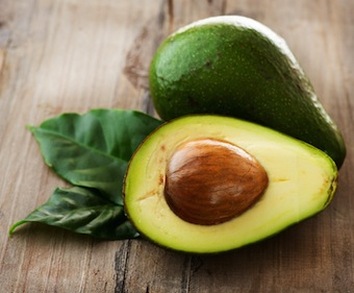 By Karen Sherwood Imagine you just ate sugar, rich dairy, or (GASP!)processed foods before a yoga class. Or how about a large coffee and a muffin before a class with some deep twists? Or a cheeseburger and fries before some inversions? What effect would it have on your practice? Would your energy spike and then plummet? Make you moody? Sad? Violent? All of the above? The modern yogi generally turns up her nose at junk foods and many of you have probably not touched a french fry since the '90s, so it’s safe to say that by now, we all know what NOT to eat. But what are the foods that make us thrive? How much of them should we be eating? And more importantly…why?  Nourishment: Think like Patanjali So what are the best foods to eat before we roll out those mats? All you have to do is walk down any aisle at Whole Foods Market and you'll discover it’s Disneyland for the health-conscious yogi. That said, I can’t tell you how many times I’ve seen someone fill up his shopping cart with health foods, (which are often pricey) but don’t really understand why. To put it simply, foods that keep the body light, and the mind focused are encouraged as well as foods that give us sustainable energy and balance. A sampling of my favorites include:
Ha! Oh how I wish that were true, it’d make things so much easier at Whole foods! Though we don’t know exactly what they ate thousands of years ago in India, I’m pretty certain it wasn’t olive oil. Ayurvedic medicine is probably the closest we can get to a Patanjili-like diet. Here are some ground rules:
Moderation: Think like Goldilocks Looking at the 8 limbs of yoga, specifically the Yamas, or “the yoga commandments,” Mitahara suggests moderation. In the nutrition world, the word moderation leaves clients frustrated since they’re left with no image of what that’s supposed to look like. Mitahara says “not too little, not too much.” There are some extreme eating guidelines which suggest fasting for several hours before a yoga class so that you’re practicing on an empty stomach. For most people, however, this is a bit too extreme. For the modern yogi, let’s break this down into two more exciting terms: (1) portion control, or even better, (2) common sense. Starving yourself for 6 hours before a yoga class will most likely leave you light-headed with very low blood sugar. On the opposite extreme, eating a heavy meal right before a yoga class is probably not a good idea, either. Let’s imagine Goldilocks was a modern healthy yogi, she’d pick the peaceful place in between: a 200-300 calorie mini-meal approximately 2 hours before a class containing a protein and a carbohydrate. If you’re taking in liquid calories, it can be consumed closer to classtime, since the gastric emptying time is much quicker. Goldilocks would also indulge sometimes so there’s nothing wrong with some dark chocolate, or a glass of great wine as long as they’re enjoyed mindfully. Bio-individuality: Think like yourself Here are some questions I'm often asked: Should I be eating only raw foods? What’s the deal with juicing? Is that too many carbs? I like to always answer with a few questions of my own: Well, how do you feel when you eat raw foods? Is it realistic for your lifestyle to juice consistently? What is your activity level from day-to-day? Just like in yoga, what’s right for one person, is not always right for the other. Just because your sister LOVES the Paleo diet doesn’t mean it’s right for you and your entire tribe. The beauty of yoga is that every pose is endless. Every posture comes with several delicious modifications so that every yogi has the opportunity to express the pose that’s right for them. Nutrition is no different. The idea when guiding a client through any nutrition program, is that everybody is different. In his book, Nourishing Wisdom, Mark David says it best, “If there are 6 billion people on the planet, there should be 6 billion diets.” A person’s weight, food allergies, accessible foods, intolerances, activity level, and health concerns, are all going to be different, and need to be taken into consideration when developing a meal plan. The good news is, yoga always gives the body a second chance, no matter what you do (or in this case eat) prior to rolling out your mat. Every practice represents a new beginning, so just by attending a yoga class, you’re already there as long as you stay committed to yourself. Namaste from the table to the mat! Published on: http://www.mindbodygreen.com
0 Comments
Leave a Reply. |
Fohow Cordyceps - Natural Healthcare Products
Quality Certified Products |
Find out our low cost shipping fee: shipping information
(Shipping includes parcel Registration) We are the distributors of The Fohow Corporation. This is not an official page of FOHOW Technology Investment Group Co., Ltd. Official website of the company: FOHOW Technology Investment Group Co., Ltd. |
|
© 2012-2022 NATURAL-HEALTHCARE-PRODUCTS.EU
F.A.Q | SHIPPING & Delivery Terms | PRIVACY-POLICY | CERTIFICATES |





